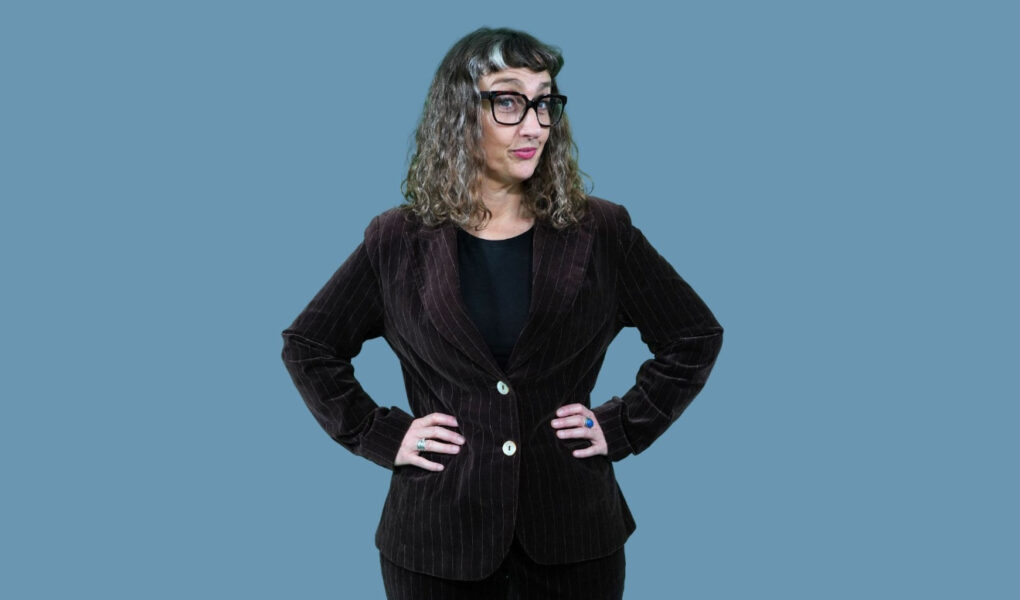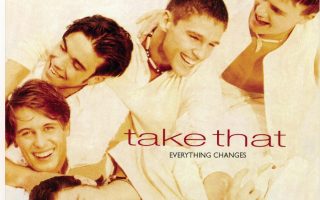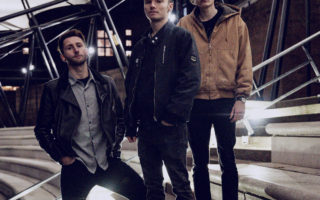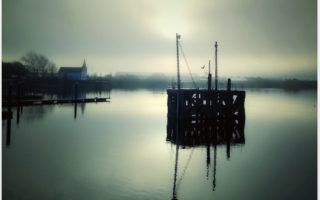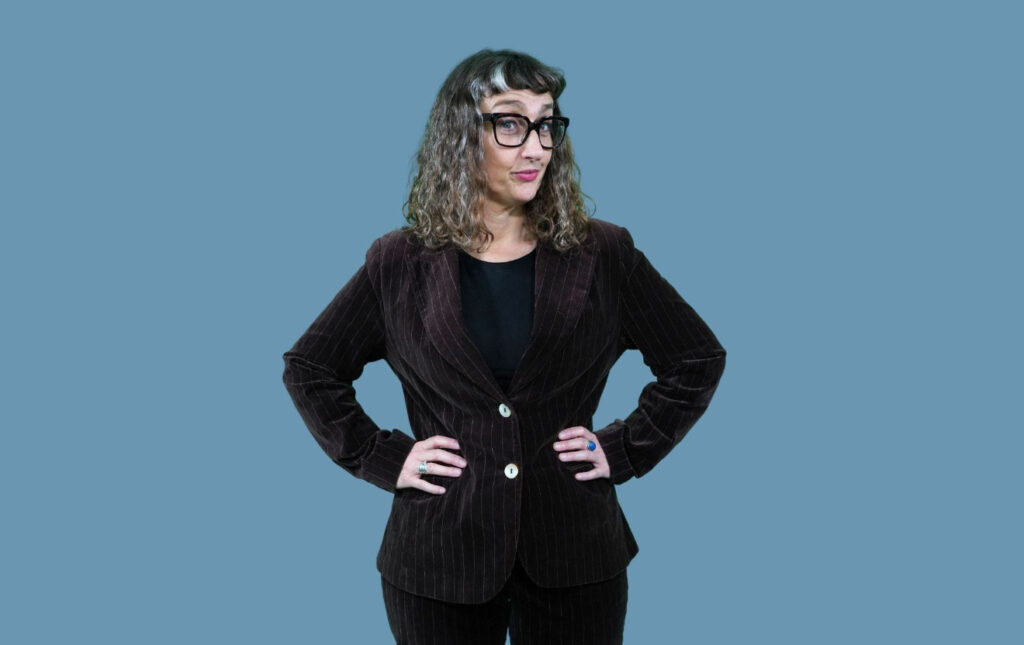
Hello Mary, how are you?
I am very well, thank you, Del.
Congratulations on the release of I Heard The Moon Is In C. How does it feel?
It feels really good to finally get it out into the world. It’s been a bit of a long process, and it’s really lovely to finally have a physical CD to show for it. I know it’s old school, but I’ve put out a limited-edition CD of the album, which is available via my website. It’s really nice to have a physical object to look at, to signify all of the work that’s gone into it.
It’s a 13-track project. What was the easiest and hardest part of recording it?
The easiest part I suppose, for me, is getting the first ideas down, that’s the joyous bit. The bit I love the most is when you are developing a song, you’ve got an idea and you’re just getting it down. I’m absolutely in my happy place when I’m doing that. The hardest part for me was, I think, getting those mixes ready for the mastering engineer, and knowing when I’d reached the point where each track was done. I, like many other producers, can end up making so many versions and overthinking it, and I definitely felt like I might be doing that.
When I was mixing the last tracks, and they were almost ready to go, I suddenly felt the need to start mucking around with the studio, you know, give it a real deep clean, move things about and rearrange everything. It was purely procrastination, because I was anxious about whether or not the album was finished.
What’s your favourite track?
I think my favourites change, but overall my favourite is the title track, I Heard The Moon Is In C. This track was never going to be released as a single, because it’s not quite as accessible as some of the other songs on the album. And yet, the reason I like it so much is that I kind of stumbled across it in a sort of happy accident while I was messing about with some MIDI tracks. It ended up sounding interesting, and I thought, you know what, I could do something with this. I have dyslexia and ADHD, and when I was doing my Masters in electronic music production, I was given software to help with the academic side of things – speech-to-writing software for dyslexics. I actually didn’t use it very much; the only thing I really used it for was this function where you can write text to be spoken back to you, and you can choose a voice for it and export the audio, I thought that was interesting. So that’s where the voice used on that track comes from – it’s dyslexia software.
You are an artist from Norfolk, how did it all begin for you?
Both my parents were pianists, and I’ve got distinct memories of lying underneath the piano when one or other of them was playing. But if I really think about it, I think about the fact that I would have heard the piano being played by my mum whilst she was carrying me. And I just think wow, that is profound, that I probably heard the piano before I was even born. But how making music started for me, well, I played violin really badly in a string orchestra. I didn’t know that I was dyslexic for a long time, but in fact it really affects the way that I look at notation. I just don’t get it. Even though I was apparently the leader of the second violins, I could not actually read the music at all. I was just playing it by ear, and eventually I did get found out. I never, ever sounded good playing the violin…
Anyway, I picked up and put down a lot of instruments as a child. I think it all started quite early, and then my first kind of multitrack experience was messing about on a tape recorder – well, it was pseudo-multitracking. I would record a little song on the tape recorder, and then I’d sing live over the top. I really loved the way that it fattened up the original vocal. I think that was my first little attempt at recording myself. I can’t remember what the song was about, it’s probably terrible. Embarrassingly, I went and played it to my teachers and sang to them. God, such a precocious child. Wow.
What did you listen to, starting out?
I was really influenced by my brother’s musical tastes. He was well into the Beatles to start with; then he got into metal and the band Kiss I wanted to be like him, So I decided that I liked them too. Much to his irritation, I also loved Wham, Imagination, Nina Simone and Christopher Cross. This feels like a guilty confession. Actually, I don’t think you should have guilty music confessions because, you know, you like what you like.
I think what influenced the electronic side of things for me is that I actually really loved Jean Michelle Jarre’s Oxygen. I think I was probably about 13 or 14 when I was listening to that. I just thought it was brilliant.
You have an appreciation for electronica, particular pioneering women. Are there any particular ones that influence you?
A lot of my appreciation for electronica stems from the pioneering women in the field, in particular the ones that influenced me. I have a huge admiration for Delia Derbyshire and Daphne Oram, because of their incredible, incredible brains. It is extraordinary what they were doing at that time, and also Pauline Oliveros who described her experiments with tape delay as time travel. I love that. These women and many others were working at a time and in a place where there really weren’t very many women around. Well, there weren’t any. I think musically, my influences are also people like Laurie Anderson, Kate Bush was quietly getting to grips programming a Fairlight CMI sampler so she could produce her own music without too much interference from her record label.
You have a live show that is an experience, how did that come together?
The Story of Things is an immersive experience combining Automata with digital sensors and sound design. I wanted to make an automata, and to combine it with digital sensors, so that it would become a musical machine. I had this idea about using vintage radiogram, which was partly about nostalgia and partly about mixing analogue technology with digital technology. The thing about automata is that you wind a handle, and you can see the machine working. The thing about digital technology is that you can’t, it’s all hidden; but we’re all really familiar with that now, because so many of us have got smartphones and computers. Digital technology is this sort of mysterious thing that happens behind all the gubbins of our phones, and we don’t see any moving parts. Most of us can’t even begin to understand how it all works. But with automata, you can, so I wanted to combine the two.
The Story of things was made as an experience to engage people’s childlike curiosity and playfulness. They would explore a number of contraptions that triggered sound and this was experienced through wireless headphones. Nothing was labelled or explained they just had to find out how the different sensors worked and see which sounds came out.
Tell us about the Liberace Fibonacci.
Well. This machine was, once again, born out of playtime. I’m an artist who really believes in the power of play. One of the things that I was afforded with the Develop Your Creative Practice funding was 10 days in a workshop. Some of that time was spent with the mentor and the rest of the time was me in a fairly chilly workshop in November, playing with bits of piano. I was trying to convert what was in my mind into a real, working automata, which is a lot is easier said than done. The reason it was called Liberace Fibonacci is because I’d just been looking at some executive toys and I thought, Can the automata be like a kinetic movable? I was looking at some kinetic executive toys and then I discovered that these toys were based on the Fibonacci sequence. The nice man on YouTube told me!
I am not a mathematician, but I was amazed. I’m someone that found maths really, really difficult in school. That’s partly a dyslexic thing, and partly how it was presented in the most boring, coma-inducing way… but anyway. The Fibonacci sequence is found in nature, for example, in pine cones. They grow in a very specific way so that each pine cone gets the maximum benefit of the available sunlight. The Fibonacci sequence is kind of everywhere.
When I was fiddling about in the workshop with some piano hammers, I screwed them onto a piece of dowel, all at slightly different angles. As you turn the dowel, the stick turns, and the hammers all ping around at different times. A kind of elaborate fidget toy if you will.
I spun the dowel and hammers across my auto harp strings, which are essentially like piano strings, and the hammers hit the strings in a rather eccentric way. And I just thought oh, Fibonacci, Liberace. And it stuck. I mean, it’s not a very catchy name. But there we are, it is what it is.
So the Liberace Fibonacci is an automata made from piano parts and a vintage stereogram. We’ve got an octave’s worth of piano keys, and as the handle turns they undulate like waves. It is a very satisfying and rather lovely thing to watch. On the other side, there’s another handle attached to a spindle, and more piano hammers are arranged in a sort of spiral effect. As you turn the handle, they turn around, and each hammer strikes a digital sensor. This is connected to all kinds of electronic gubbins in the back, containing samples that I have made from a Blüthner piano, the sort of piano that I grew up with as a child. It plays certain triggers as you wind the handle around. It also has remote sensors, which are triggered when you stand on a series of record-shaped mats.
Post-COVID, what have you learned about yourself in the last three years?
My life took a really big diversion during and directly after COVID. I’ve learned that I can do scary and challenging things. Pre-COVID I worked in community music, which is something I have done for years. I love it, and really believe in it. But when COVID hit, of course, all the work stopped. I was working with vulnerable people, singing, and we just couldn’t continue to do that safely. This opened up a period of time for me to go and study and think about what I really wanted to do.
Did you pick up any new skills?
An opportunity came up to do a Master’s in electronic music production at the University of Hertfordshire. I really, really wanted to do it, and I loved it so much. It was pretty hardcore. It all took place over 10 very intense months. I decided to do it full time, and that changed the direction of my music and my creative focus.
I really wanted to develop different ways to get my music heard, aside from the usual channels, because it seemed like an incredibly saturated market, and I wanted to try and do things differently. Just thinking about really bonkers ways to make music and experiment with sound somehow gave me the confidence to go yeah, actually I’ve got some really nuts ideas in my head, but I really want to make them happen.
I picked up many new skills on that Master’s course, and my production chops improved radically, which has led, eventually, to the release of this album.
The biggest thing is that has increased my confidence as an artist; the realisation that you don’t have to do work in exactly the same way as everyone else. I do much more on my own terms these days. That’s a really great thing about being a bit older.
What are you listening to at the moment?
I’m listening to The Broken Orchestra, Agnes Obel and Bonobo at the moment.
What is next for you?
Well, I am currently in the process of writing my next project bid. I’m in the very early stages of that. I’m going to be making an immersive show called I Heard The Moon Is In C, based on the inner workings of an ADHD brain, which is what I am blessed with. The show is going to combine elements that I’ve been working on in the last three years or so, putting them all together to create an immersive live show. I’ll be working on this project with my brilliant musician friends Mark Howe and Carl Cole, If our funding bid is accepted, we will be touring to the show in October to December 2024 to begin with. Fingers crossed!

